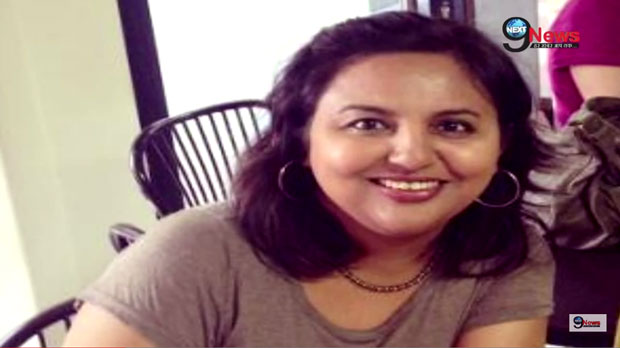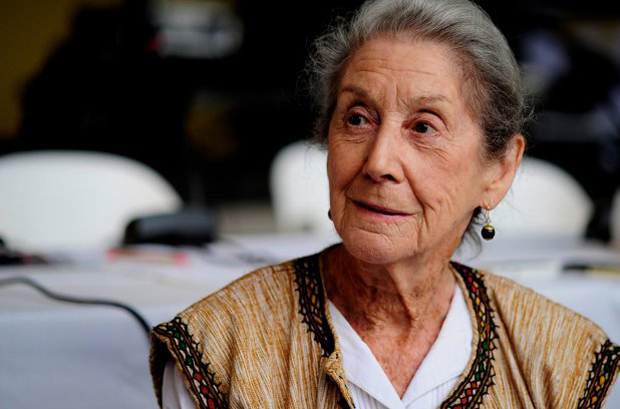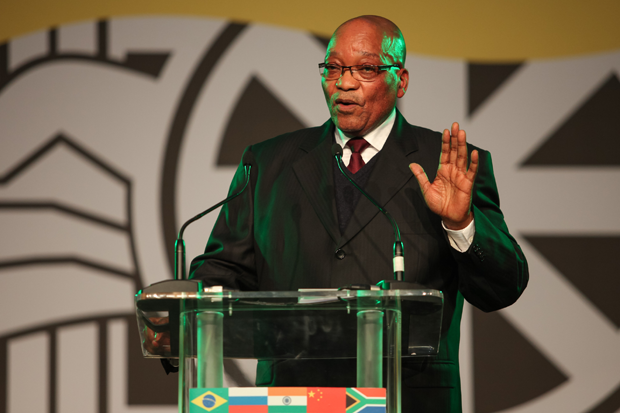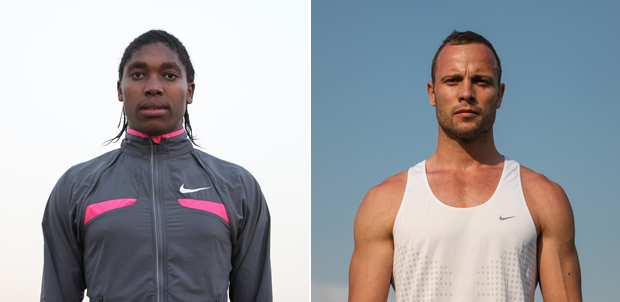13 Apr 2015 | Campaigns, mobile, South Africa, Statements

Zainub Priya Dala (9News / YouTube)
A South African novelist has been subjected to harassment and violently assaulted for expressing an opinion of Salmon Rushdie’s work. Zainub Priya Dala, a psychologist and a physiotherapist specialising in autism, recently published her first novel, What About Meera.
While speaking at a school literary event in March, Dala expressed admiration for Rushdie’s work. The following day she was threatened by three men in a parking lot. The assailants placed a knife to her throat and hit her in the face with a brick, calling her “Rushdie’s bitch.” The attack ended when a minibus entered the lot. Dala said she believes she would have been stabbed had the attack not been interrupted.
Dala reported that she has come under pressure from some of Durban’s religious leaders to renounce her statements on Rushdie and his work. She has been told to say the prayers and seek forgiveness.
Diagnosed with post traumatic stress disorder, Dala is currently being treated at a hospital, where she went reluctantly and where she is being held against her wishes. Index is pleased to hear that she has now been discharged from the facility.
Index calls on South Africa’s government to protect the right of individuals to freedom of expression guaranteed by the country’s constitution. Further, South Africa must provide protection for Dala.
“South Africa is a modern democracy that has publicly committed to upholding the values of free expression and the rights these values afford individuals,” said Index CEO Jodie Ginsberg. “It is incumbent on South Africa to show it believes and supports these principles by supporting Zainub Dala and by taking action against those who would silence her.”
14 Jul 2014 | Africa, Magazine, News and features, South Africa

Index on Censorship remembers Nadine Gordimer, who died today at 90. The South African author, winner of the Nobel Prize for Literature and the Booker Prize among many other honours, was a long-time Index supporter and patron. She wrote for Index on Censorship magazine a number of times, including in its first year. Gordimer was also involved in the anti-apartheid movement, and much of her work deals with issues of politics and race. Three of her books – Burger’s Daughter, A World of Strangers, The Late Bourgeois World – were banned by the apartheid regime.
Ursula Owen was editor of Index magazine in 1994, when South Africa held its first free election. An issue of the magazine celebrated the historic event with an article by Gordimer, among others.
Owen said: “I remember visiting her in the late 90s, together with Adewale Maya Pearce, when I was running Index. We sat in her garden in Johannesburg. She was attentive and full of energy, and talked with great passion about what was going on in post-apartheid South Africa. Later we went to supper with Helen Suzman – an extraordinary experience to spend time in the same room with these two remarkable women. Awesome, as my granddaughters would say.”
Jayne Whiffin, publisher of Index magazine, said: “I am very sad to hear of Nadine Gordimer’s passing today. Nobody growing up in South Africa in the 1980s and 1990s could be unfamiliar with her work, and her short story, Message in a Bottle has great personal significance for me as the first piece of writing I encountered of hers while at school in South Africa. Her writing was an exemplar of how fiction can tell the truth even under the most strenuous forms of oppression, and she will be sorely missed both in South Africa and around the world.”
In celebration of her remarkable life, Index has created a collection of Gordimer’s articles that appeared in the magazine. These are free to read until 14 September.
Apartheid and censorship [1972]
Standing in the queue [1994]
Act two: one year later [1995]
Rushdie revisited [2008]
This article was posted on July 14, 2014 at indexoncensorship.org
11 Jun 2014 | Africa, News and features, South Africa

President Jacob Zuma of South Africa (Photo: Jordi Matas/Demotix)
Rumours in the run-up to South Africa’s fifth democratic election that a “ministry of propaganda” was planned, have come to fruition as the formation of a new “ministry of communication” has been announced. The reasons for this development could be found in the results of the 8 May national and provincial elections, which returned the African National Congress (ANC) to power but, as predicted by the party’s own research, with a reduced majority – from 65.9% to 62.1%.
The party experienced its primary electoral setbacks in metropolitan areas, particularly Johannesburg and the capital Tshwane (Pretoria), both situated in the province called Gauteng, which means “place of gold” in the local Sesotho language – aptly so, as Gauteng is the economic heartland of the country.
ANC provincial votes in Johannesburg came to 52% while provincial votes for the ANC in Tshwane dipped to 49%, both cases a decline of 10% from the previous election in 2009. It was left to the more peripheral cities to pull the ANC through in Gauteng. Another large city, Nelson Mandela Bay in the Eastern Cape, came in below 50% again, just as it had done in 2009. Notably, the ANC received its usual high percentages of votes in the predominantly rural provinces of Mpumalanga, Limpopo, Free State and KwaZulu Natal, which clocked between 64% and 78% in turnout for the ANC.
This discrepancy in ANC support between metropolitan and rural areas could be explained with regards to access to media. The residents of Tshwane and “the Afropolitan city” of Johannesburg (as some scholars call it) have several options when it comes to accessing information and news opinion. Apart from the public broadcaster’s TV and radio stations, there is a range of privately owned media to choose from: from newspapers and radio stations owned by competing media companies, to various online news sources, to social media in the form of blogs, Twitter and Facebook.
This would indicate the political need for the creation of a ministry particularly aimed at controlling the flow of information, especially as local government elections are due to take place in two years’ time, with the ANC running the risk of losing control of the most significant metropolitan areas in the economic centre of South Africa. The ANC’s poor performance in Gauteng can be attributed to various controversies concerning its leader Jacob Zuma, who has been the president of South Africa since 2009. These controversies range from the introduction of a road tolling system in Gauteng without proper public consultation to Zuma being implicated in massive misappropriation of state funds spent on his private homestead in the rural hinterland of KwaZulu Natal. Combine these events with Zuma’s status as self-proclaimed traditionalist who frowns upon women’s emancipation and gay rights, it would seem that the president was a liability that cost the ANC votes in Gauteng.
While these controversies are debated in Gauteng media, voters in the more rural provinces found themselves mostly beholden to officially sanctioned news from the South African Broadcasting Service (SABC). The SABC has been immersed in successive battles for political control which reflect the factional conflicts within the ruling ANC. Political interference in the SABC has become a feature of the Zuma presidency.
During the 2014 election campaigns, the SABC banned no less than three opposition party advertisements even though it is legally compelled to ensure fair exposure of all political parties in the run-up to elections. The reasons were spurious. For example, the SABC claimed that footage showing and criticising excessive police force amounts to inciting violence against the police. Appeals to the Independent Communications Authority of South Africa (Icasa), constitutionally mandated to oversee the SABC, failed. The affected political parties – the Democratic Alliance and the Economic Freedom Fighters – took to YouTube to ensure public exposure of the ads – with ads going viral.
The new ministry of communication seems a direct intervention to stem negative publicity. Polls show that Zuma has become a liability to his party. He is however just one factor influencing the growing impression that the ANC is failing in its task to overturn the legacy of apartheid. The party’s response has been to further tighten control over the flow of information – a trend that includes the adoption of the Protection of State Information Act, which seeks to clamp down on journalists and citizens generally accessing state information that reveals government corruption or incompetence.
In Zuma’s announcement of his new cabinet after the election, the erstwhile ministry of communications has been split into two: a ministry for telecommunications and postal services and a ministry for communications. The latter, he said, would be responsible for overarching communication policy and strategy, information dissemination and publicity as well as the branding of the country abroad. Improved communication and marketing will promote an informed citizenry and also assist the country to promote investments, economic growth and job creation.
This conflation of marketing and branding with information dissemination, all for an “informed citizenry”, is further strengthened by the “components” that the ministry would be “formed out of”:
- Icasa
- SABC
- Government Communications and Information System (GCIS)
- Brand SA and
- Media Development and Diversity Agency (MDDA)
As mentioned, the SABC’s constitutional mandate is to act as a public broadcaster, which includes being politically unpartisan. Similarly, Icasa is constitutionally mandated to act independently. The MDDA Act clearly states this body’s functions as impartially and independently promoting the diversification of the media. Lumping together marketers and government communicators with journalists and bodies responsible for promoting access to information suggests that the new ministry represents a more concerted attempt to obviate the country’s constitutional commitment to the “freedom to receive or impart information or ideas”.
This article was published on June 11, 2014 at indexoncensorship.org
19 May 2014 | News and features, Politics and Society, Religion and Culture, South Africa

Caster Semenya and Oscar Pistorius in 2012 (Photos: Jordi Matas / Demotix)
Caster Semenya carried the South African flag at the opening ceremony of the 2012 London Olympic Games; Oscar Pistorius waved it at the closing. Sandwiched between them was one medal, Semenya’s silver, one story of triumph over adversity, Pistorius, who is disabled after having both his legs amputated as a child ran with able-bodied athletes and proof that the country known as the Rainbow Nation does have some pots of gold.
Not even two years have passed since then and both flag-bearers have made the news for something other than sport. Pistorius has been on trial for the murder of his girlfriend Reeva Steenkamp, who was shot dead on February 14, 2013 while Semenya’s lovelife has come under scrutiny. For both, the glory has turned into an uncomfortable glare with the spotlight shone on their most intimate moments.
The Pistorius trial is a first for South Africa because it has been covered on television in full. All proceedings have been broadcast on a specially-created channel on the satellite service DSTV although witnesses could choose if they wanted to be filmed while giving testimony. After the live feed, the focus would shift to a dissection and analysis of the day in court.
On May 14, statistics revealed the Oscar Pistorius Trial TV Channel was the fourth most watched channel on pay-television in South Africa. It is also the most successful pay TV channel ever launched in the country’s history, employs 180 freelance producers, reporters, researchers and presenters and has attracted audiences at all times of the day, even the traditionally quiet period in the mid-morning and mid-afternoon.
The success of the channel has also led to speculation the upcoming murder trial of Shrien Dewani, the Bristol-based businessman who was extradited to face charges of plotting the hijacking and shooting of his wife, Anni while on honeymoon in Cape Town in 2010, will be televised in the same fashion. South Africans, who live in a country where three women are killed every day by their partners, have shown an appetite for courtroom drama.
During the Pistorius trial viewers were able to watch the athlete retch into a bucket as he heard testimony about the damage the four bullets he shot at Steenkamp caused, to hear him cry on the stand when shown a picture of her bullet-hit head and observe how the legal process takes place. It has even given coverage to the trial in the courtroom next door where a man, Thato Kutumela was convicted of killing his girlfriend Zanele Khumalo, which would otherwise not have made the news at all.
The Pistorius trial has already had one postponement, a two-week adjournment to accommodate for public holidays over the Easter period, but it is now set for a much lengthier one. Pistorius will spend 30 days as an outpatient undergoing psychological evaluation. A psychiatrist called by Pistorius’ defence team testified that he suffered from generalised anxiety disorder from a young age which could have diminished his capacity when he shot Steenkamp.
While Semenya’s mental state has not had reason to be examined, another aspect of her private life, her relationship, has. Earlier this week news broke that Semenya had paid lobola – the traditional bride price which is comparable to dowry – for her girlfriend, fellow athlete Violet Raseboya. When newspapers tried to confirm the story, Semenya refused to help them. “I really have nothing to say about that article,” she said. Irrespective of Semenya’s statement, many public comments have been laced with nastiness about Semenya’s sexuality and gender.
These are themes that have stalked the runner since her champagne moment in 2009, when as an 18-year-old she won the 800 metre race at the World Championships in Berlin. Instead of celebrating the gold medal she faced a barrage of accusation over her gender. Fellow competitors accused Semenya of being a man and her appearance, underlined by her short hair, strong biceps and washboard abdominal muscles, did not help that.
She was required to have her gender tested amid a wave of protests that the procedure was invasive. The results were never made public although it was revealed that she had neither a womb nor ovaries and high levels of testosterone. A year later, the International Association of Athletics Federations cleared Semenya to compete against other women but the stereotype remained.
With the spectre of the tests hanging over her and because Semenya did not look typically feminine, she was thought of as something “other.” The foregone conclusion was that she was homosexual and when media reports unveiled a girlfriend, through Drum magazine which used Facebook pictures of Semenya and Raseboya, there was a collective nodding of heads and growing of stigma.
Being black and lesbian is not easy anywhere in Africa, and illegal in some parts. Sisande Msekele, writing in Curve magazine explained. “In many black cultures being a lesbian is associated with witchcraft. Coming out as a black lesbian is to risk being called a witch, demon possessed, raped, disowned and killed.”
Semenya, who is a public figure, may not face the same dangers from her community and the close inspection of her private life will be inescapable but not illegal. Same sex marriages have been legally recognised in South Africa since December 2006.
This article was published on May 19, 2014 at indexoncensorship.org




